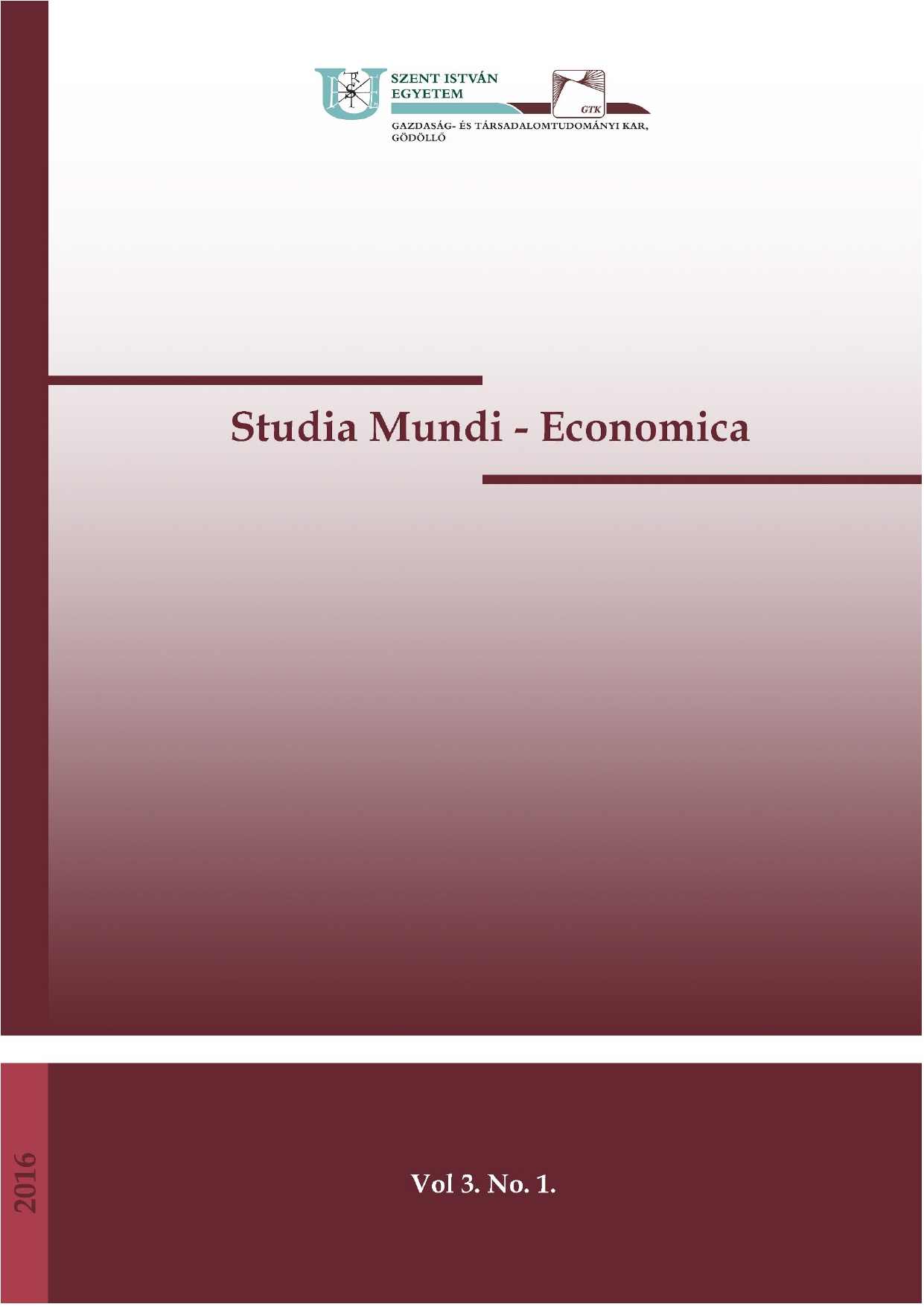Interreg grants as bridges to the period after 2020?
DOI:
https://doi.org/10.18531/Studia.Mundi.2016.03.01.144-156Keywords:
stratégiai tervezés, EU-támogatások, partnerségAbstract
After the 2014-2020 programming period, the available grants from the ESIF will reduce drastically in Hungary, therefore local governments will feel the urge to look for international project opportunities. However, this needs a different approach in planning and implementation, as well as strategic allies. The local governments have to acquire these approach and partners in the current period, until 2020, and Interreg Programmes seem to provide good opportunities for achieving these goals.
References
Budapesti Vállalkozásfejlesztési Közalapítvány (2016) Letöltés helye: http://iesmarthungary.net/vallalkozoitudastar/tematikuscikkek/kreativitas-es-innovacio-az-uzleti-tervezesben Letöltés ideje: 2016.04.21.
Citizens’ Summary of Interreg CENTRAL EUROPE Cooperation Programme (2014), 6. p. Letöltés helye: http://www.interregcentral.eu/Content.Node/apply/Document_Overview.html Letöltés ideje: 2016.04.21.
Danube Transnational Cooperation Programme (2014) p.6. és Executive Summary Cooperation Programme (2014) p.6. Letöltés helye: http://www.danube-region.eu/about/key-documents Letöltés ideje: 2016.03.14.
Europa Büro des Stadtschulrats für Wien (2016): Az i.e. SMART projekt hivatalos honlapja Letöltés helye: http://www.ie-smart.eu/ Letöltés ideje: 2016.04.21.
Európai Parlament és Tanács (2013): Az Európai Parlament és a Tanács 1299/2013/EU rendelete az Európai Regionális Fejlesztési Alap által az európai területi együttműködési célkitűzésnek nyújtott támogatásra vonatkozó egyedi rendelkezésekről (2013. december 17.), (6) és (7) bekezdés Letöltés helye: http://eur-lex.europa.eu/legalcontent/HU/TXT/HTML/?uri=CELEX:32013R1299&from=EN Letöltés ideje: 2016.04.18.
European Commission (2010): Communication from the Commission to the European Parliament, the Council, the European Economic and Social Commitee and the Commitee of the Regions - European Union Strategy for Danube Region Brussels, 08/12/20010COM(2010) 715, 6.p. Letöltés helye: http://www.danube-region.eu/component/edocman/communication-ofthe-commission-eusdr-pdf Letöltés ideje: 2016.04.15.
Interreg CENTRAL EUROPE Cooperation Programme (2014), 11.p Letöltés helye: http://www.interregcentral.eu/Content.Node/apply/Document_Overview.html Letöltés ideje: 2016.04.21.
Interreg Danube (2016): Interreg Danube Operational Programme – Information on the national co-financing systems, 25.p Letöltés helye: http://www.interregdanube.eu/uploads/media/default/0001/01/ef4487698373aea31030b817fb09420c9fa32d1f.pdf Letöltés ideje: 2016.05.01.
Káposzta J, Nagy H (2015): Status Report about the Progess of the Visegrad Countries in Relation to Europe 2020 Targets, EUROPEAN SPATIAL RESEARCH AND POLICY 22:(1) pp. 81-99. ISSN (Online) 1896-1525, DOI: 10.1515/esrp-2015-0018
Külgazdasági és Külügyminisztérium (2014): Európai Területi Együttműködés Letöltés helye: http://egtc.kormany.hu/europai-teruleti-egyuttmukodes-2014-2020 Letöltés ideje: 2016.03.02.
Miniszterelnökség - Nemzetgazdasági Minisztérium - Nemzetgazdasági Tervezési Hivatal (2014): Magyarország Partnerségi Megállapodása a 2014–2020-as fejlesztési időszakra. Budapest, 10. P Letöltés helye: https://www.palyazat.gov.hu/szechenyi_2020 Letöltés ideje: 2016.04.21.
Downloads
Published
Issue
Section
License
Copyright (c) 2016 Szilágyi Anna

This work is licensed under a Creative Commons Attribution-NonCommercial-NoDerivatives 4.0 International License.
A folyóirat Open Access (Gold). Cikkeire a Creative Commons 4.0 standard licenc alábbi típusa vonatkozik: CC-BY-NC-ND-4.0. Ennek értelmében a mű szabadon másolható, terjeszthető, bemutatható és előadható, azonban nem használható fel kereskedelmi célokra (NC), továbbá nem módosítható és nem készíthető belőle átdolgozás, származékos mű (ND). A licenc alapján a szerző vagy a jogosult által meghatározott módon fel kell tüntetni a szerző nevét és a szerzői mű címét (BY).






